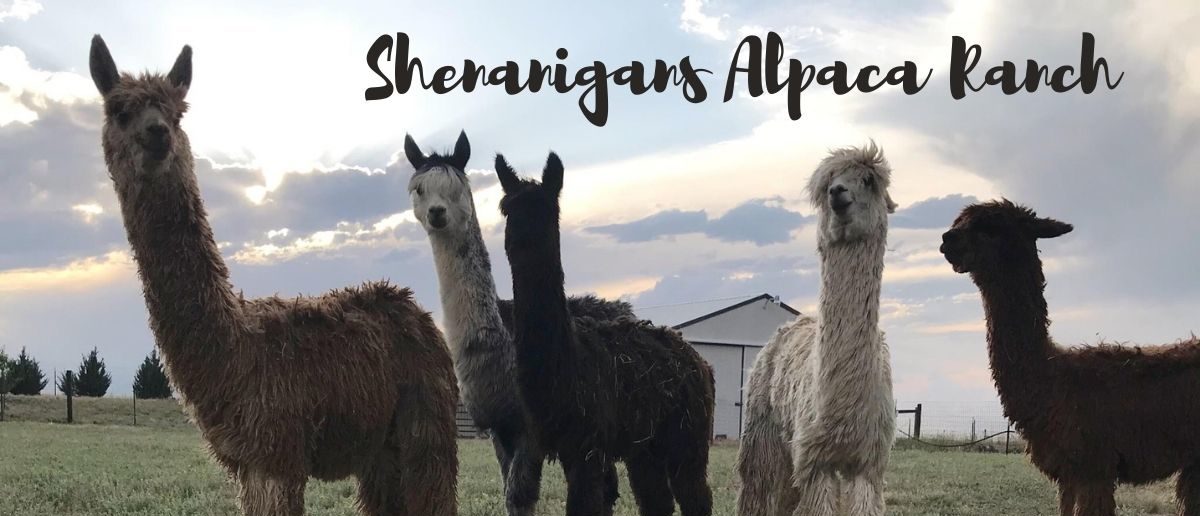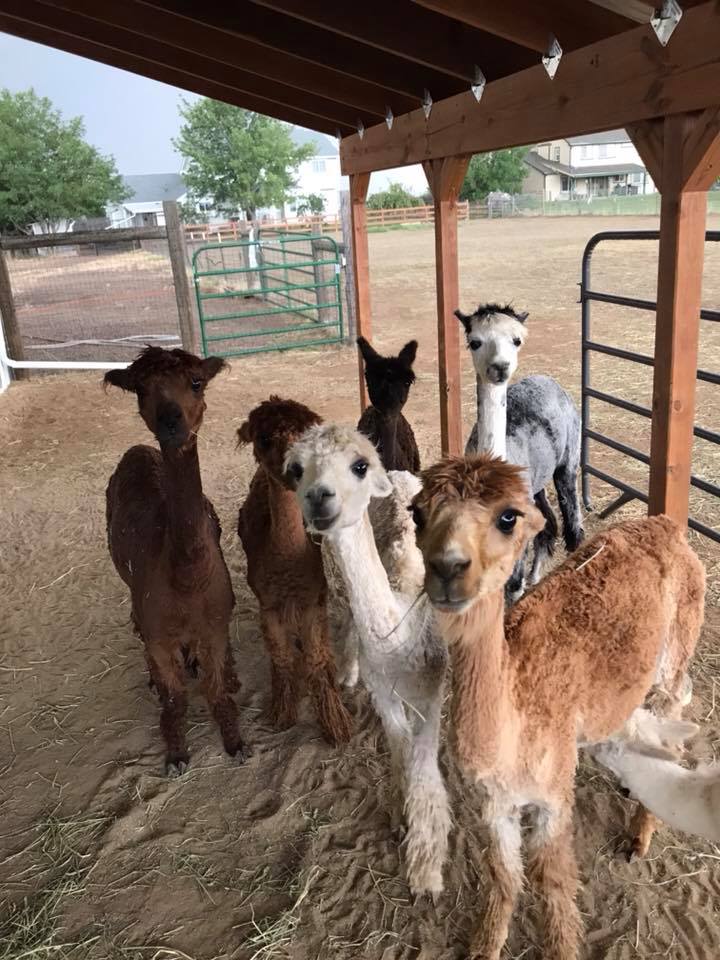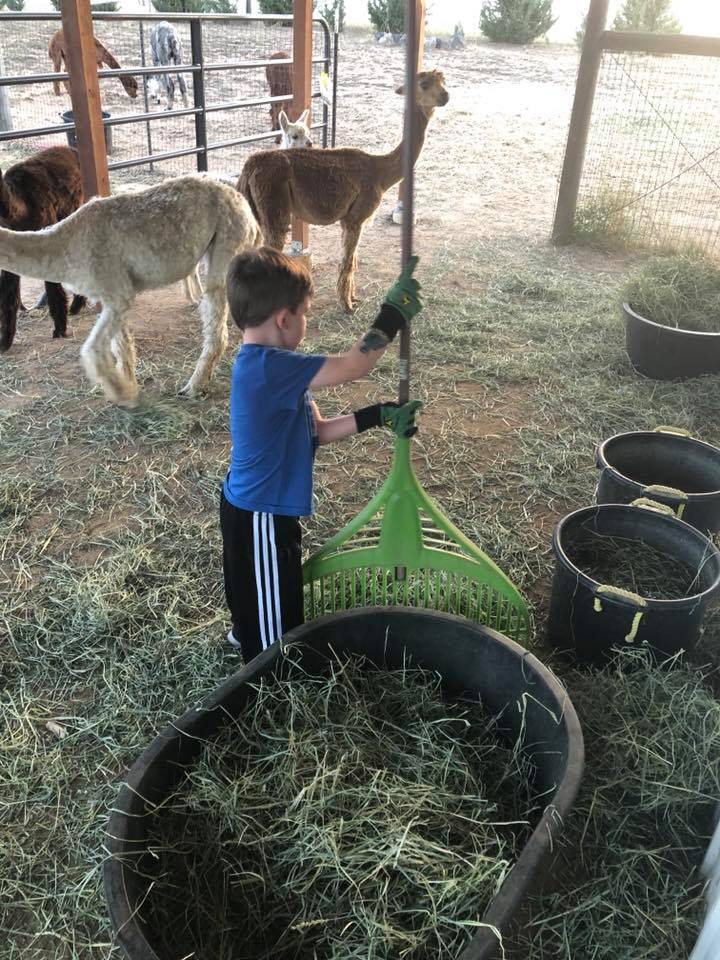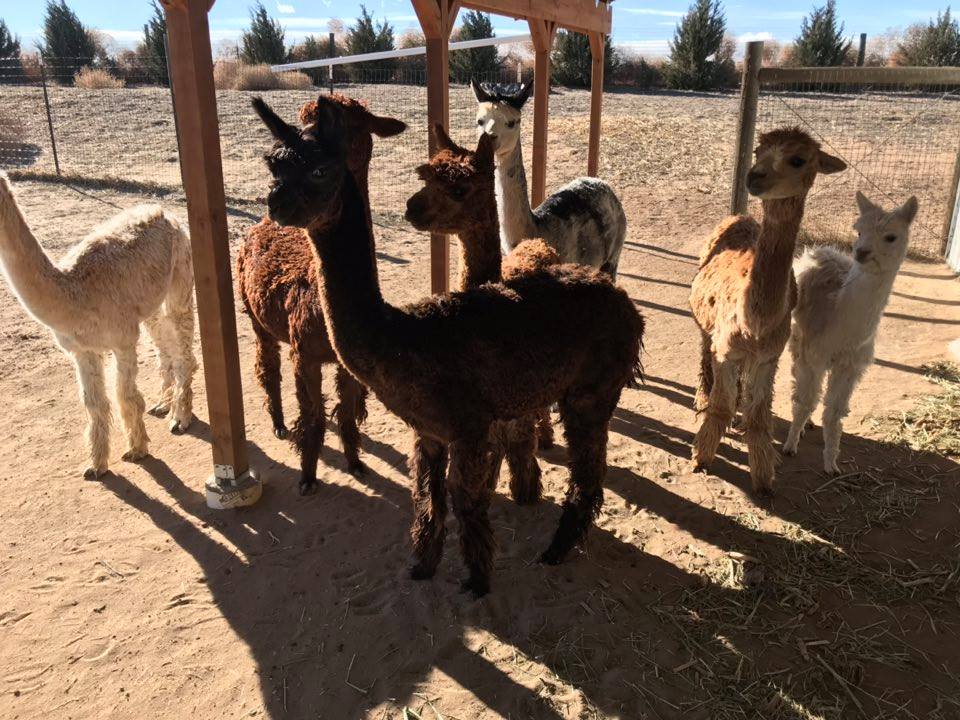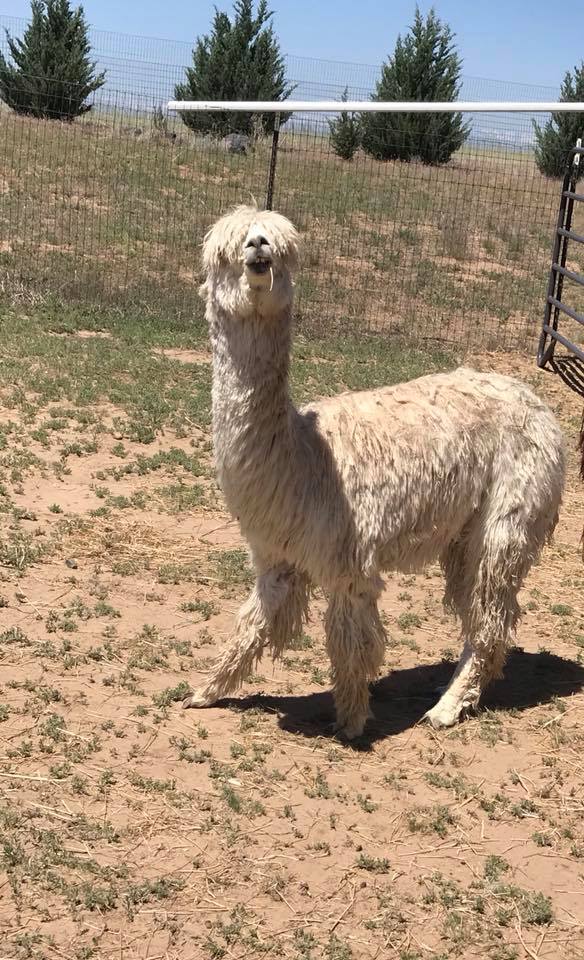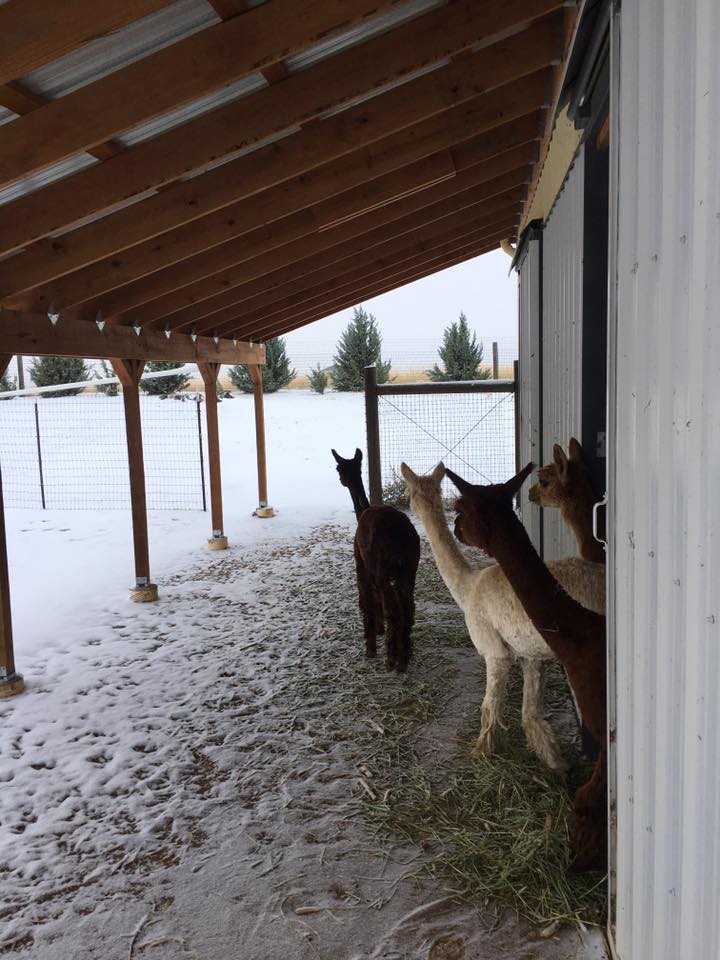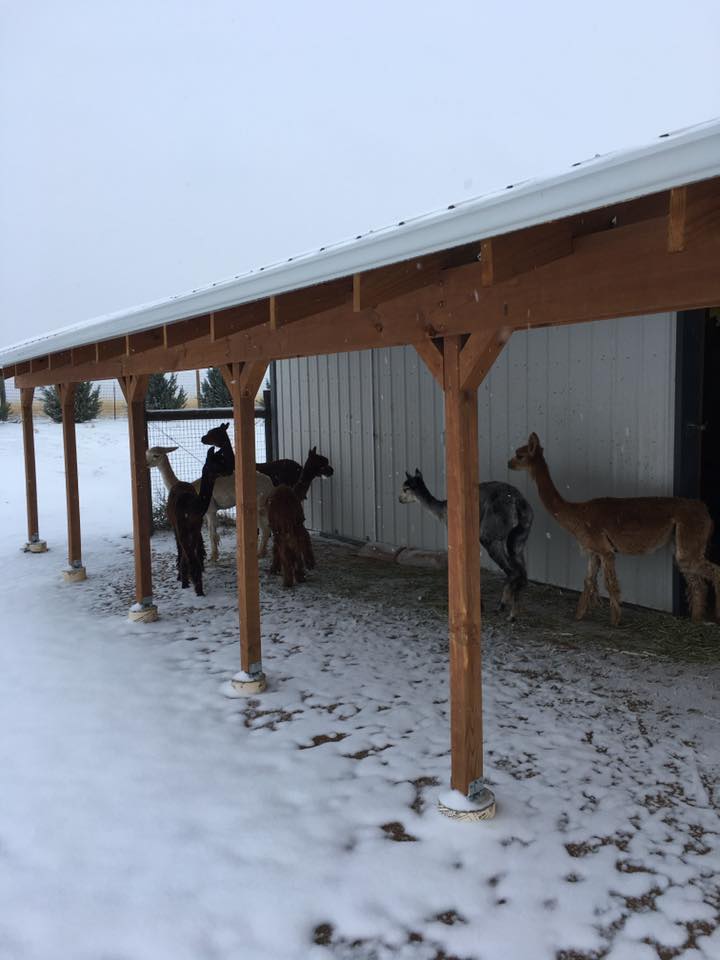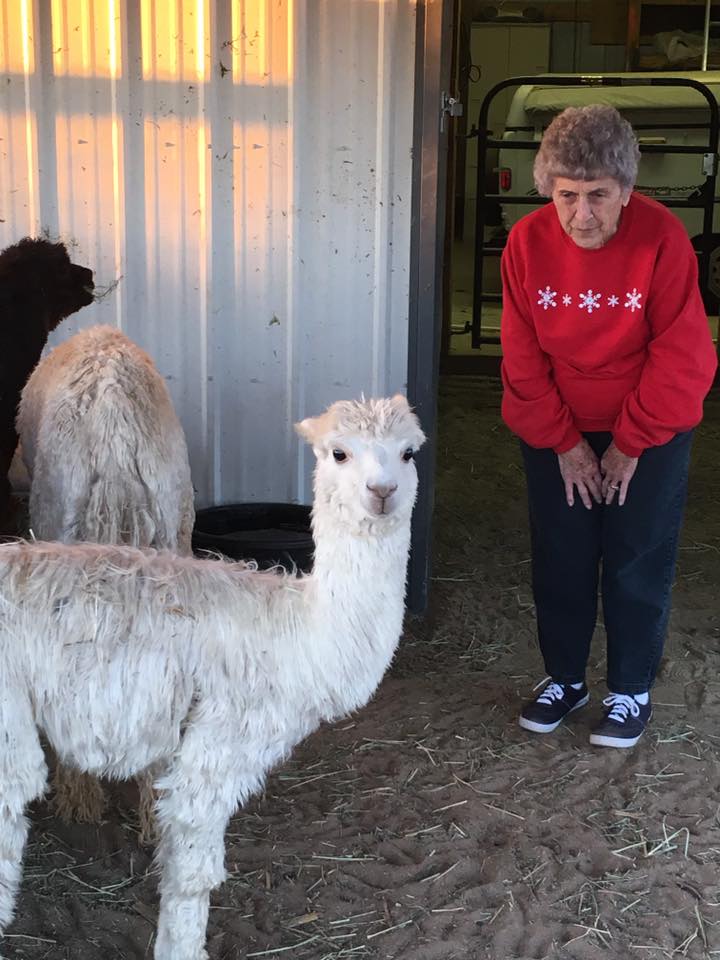Answers to Some Questions about Suri Alpacas
Tell me about alpaca babies.
In alpacas, pregnancies last 11 to 12 months, and usually result in a single cria (baby). Twin cria births are rare—and dangerous: a twin birth can result in the deaths of both the mother and the crias. Crias can be born at any time of the year, and the mothers seldom need assistance. Within an hour or so the cria will be up and walking, looking to its mother for a first feeding.
What do alpacas eat?
Alpacas primarily eat hay, year-round. The hay should be a bright, clean healthy green color and reasonably fresh; it should never smell musty or become dusty. Hay can occasionally be mixed with orchard grass or other wild grass and a light mixture of fresh alfalfa—to provide minerals and nutrients that are not available in a strict diet of hay. Alpacas should always have access to fresh water. And, some plants are toxic to alpacas: they should never have access to acorns, African rue, agave, amaryllis, autumn crocus, azaleas, bear grass, bracken ferns, broom snakeweed, buckwheat, buttercups, calla lilies, carnations, castor beans, fireweed, oleander, orange trees, poppies, or ragweed.
Why do you cut their hair annually?
Suri alpacas have long, crimpless “locks” (they can be curly, twisted, or straight) that grow 5 to 7 inches in a year and drape down, in a sort of dreadlock look, around each side of the alpaca. While most growers cut fleece each spring, between the cold of winter and the heat of summer, some do allow their animals to grow for several years. Such fleeces can look dramatic, but it is more likely to contain debris and to be more fragile.
What colors are alpaca fleece?
The fleece of Suri alpacas can grow in 22 recognized natural colors, more than any other fiber animal, and range from black and gray to brown to ivory and white. The natural colors include white; beige, light fawn; medium fawn, dark fawn, gold; light brown, medium brown, dark brown, maroon; bay black, true black; light silver gray, medium silver gray, dark silver gray, light rose gray, medium gray, dark rose gray; and a range called “multicolor” that includes pinto, “fancy,” Appaloosa, and pattern. Over many generations, alpacas have also been bred into more than 50 unique shades and colors; for this reason, animals who possess the natural color strains are generally segregated during the breeding season to keep the fleece colors pure.
Why “Shenanigans”? How do alpacas act?
Suri alpacas are inquisitive and curious; mix those qualities with intelligent, friendly behaviors, and you have animals that are somewhat goofy extraverts filled with energy that easily leads to mischief and laughs! Hence, they created the name for our alpaca ranch themselves. In a serious vein, their personalities also lead them to find shelter in bad weather, to follow routines, to approach when called, and to protect each other. Fortunately, they are also generally submissive to humans and easy to handle: a firm hand under their jaw and behind the ears normally restrains them.
Fun Facts about Suri Alpacas
Suri alpacas are members of the Camelidae family, which includes the more common Huacaya alpacas, along with llamas, guanacos, and vicuñas from South America and camels, both Bactrian and Dromedary, from Asia and Africa.
The fleece of an alpaca is cut annually, and yields one of the most versatile of natural fibers. These fibers are described as stronger than Angora, finer than cashmere, smoother than silk, softer than cotton, and warmer than goose down. Fabrics created from the fibers are said to be as soft as fine flannel, as lustrous as mohair, and as warm as—or warmer than—wool.
Alpacas traditionally thrived in the mountains of the South American Andes; in fact, they have extra-large hearts and oversized lungs to keep their bodies well supplied with blood and oxygen in thin-aired elevations. Their thick coats kept them warm.
While the number of Suri alpacas continues to decline in their native Peru and Bolivia, new populations are growing in the United States, Australia, Canada, and New Zealand.
Interestingly, scientists believe that the Andean people of South America created alpacas through an early form of selective breeding about 6,000 years ago. They prized the cloth made from alpaca fleece so highly that only members of their royal families were permitted to wear cloth made from it.
Other Resources for Information about Suri Alpacas
11 things you didn’t know about alpacas, from Mother Nature Network, posted December 10, 2018
Land Mammals: Alpaca – Vicugna pacos, from Facts about Animals, developed by the Michigan State University Wildlife Society and Zoology Club and posted December 10, 2018
Suri Fiber Harvesting Code of Practice, issued by the Suri Network Product Development Committee, April 2014
